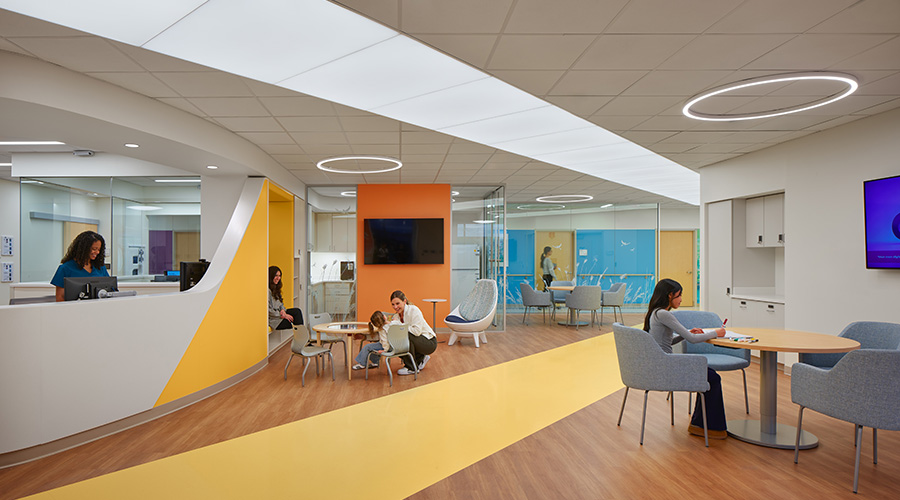The healthcare world is anything but stagnant. Each year brings new challenges alongside new innovations, and we are constantly evolving best practices for healthcare infrastructure that enables the highest level of patient care.
This year, as building and safety requirements for healthcare infrastructure become increasingly complex and require deeper levels of expertise, it will be more important than ever to leverage digital transformation to drive efficiency.
Healthcare facilities managers should consider these three predictions to better understand the way digital tools will enhance healthcare facilities in 2023.
1.) Facilities will keep investing in modernizing everyday tasks.
The global pandemic demonstrated what the U.S. healthcare system looks like at its most under-resourced and overwhelmed. It shed light on the staffing shortages, patient influxes, long working hours and other key challenges that healthcare workers must contend with not just in times of crisis but each day.
Luckily, the growing popularity of software and other digital tools is helping drive efficiencies in healthcare, allowing providers to allocate more time to the important stuff: patient care. In the next 12 months, more than 95 percent of providers expect to make new software investments, with one-third planning to spend more than usual, according to a recent KLAS and Bain report. This trend adds momentum to the 45 percent of providers who increased their software investments this past year. The top areas of focus for new technology investments include revenue cycle management, patient intake and cybersecurity. Emerging technologies also have shown immense value when it comes to the physical infrastructure.
2.) Technology will make facility management increasingly proactive.
2023 will see an increase in proactive facility management — not just within new construction but in existing facilities, as well. Healthcare facilities need to ensure a high standard of care and safety in infection-contained environments, and on a more macro level, they must be able to withstand powerful forces like natural disasters and climate change. With state-of-the-art healthcare institutions continuing to be an investment in the United States, advanced technology is the key to ensuring these facilities live up to the highest of standards for the years to come.
Facilities will explore more proactive ways to mitigate risk, reduce costs and maintain safe environments through emerging innovative technology. Digital tools can provide the following benefits for healthcare facility managers:
- Better collaboration. Healthcare has considerably more regulations and stakeholders compared to other sectors. When constructing and maintaining facilities, there is involvement from additional practitioners, infection control specialists, authorities having jurisdiction (AHJs), state and federal agencies and accreditation organizations. Digital tools provide centralized hubs where these stakeholders can collaborate and share information in real time instead of playing phone tag. This technology promotes efficiency and accuracy.
- Better interactive resources. Digital tools bring critical resources to life. Healthcare design and construction teams can leverage video modules, online training and interactive renderings of patient corridors, nurses’ stations, operating rooms, medical gas zone valves and patient rooms as alternate ways to study and retain knowledge.
- Better documentation. With so many stakeholders claiming a seat at the table in healthcare infrastructure, documentation is key. Healthcare has more AHJs than nearly any other industry, and equivalencies and allowances are not uncommon. With so many AHJs involved, it is critical that design and construction teams can capture these equivalencies, allowances, approvals and other notes in an organized, well-documented manner that provides visibility to all relevant stakeholders for years to come.
3.) Healthcare’s word of 2023: resilience
Two types of resilience will be paramount in the coming year.
The first type of resilience is structural. Buildings are the foundation of communities, and healthcare buildings hold special importance. In 2023, managers will see a push for building upgrades to ensure these environments can support healthcare professionals, patients and visitors while keeping them healthy. This improvement might come in the form of increased building inspections or new and updated codes, making it critical for stakeholders to have real-time access to codes and standards information and team members’ shared notes on a given facility. Collaborative digital tools can help with this.
The second type of resilience is organizational. One way that managers will see organizations foster resilience is by investing in the long-term success of their workforces. This means using digital transformation to recruit and retain fresh talent, streamline processes and reduce employee burnout and retain institutional knowledge amid mass retirements in the field.
It is predicted that 75 million Baby Boomers will retire by 2030. Veterans in healthcare infrastructure know it takes years of hands-on experience to master the ins and outs of the field, so how can they streamline the learning curve for the next generations?
Digital tools can ensure that expertise does not leave an organization when experienced employees do by democratizing their knowledge. Within future-proofed digital hubs, veteran professionals can build up notes from experience on past projects, bookmark those notes and create collections for other team members to study. Applying these tools, specific information around infection control or patient-centered room design can be shared with team members so they are better prepared for the next project. This application can help managers streamline training and onboarding, avoid repeating past mistakes and complete projects more efficiently.
Digital transformation will be a game changer in 2023. Emerging technology will continue to modernize everyday tasks, encourage proactive facility management and foster resilience. This will help managers tackle whatever new challenges 2023 brings and ultimately make them stronger for 2024 and beyond. Perhaps most importantly, increased efficiencies and resiliency will enable healthcare providers to put time and energy back into driving better health outcomes.
Brian O’Connor, P.E., is a fire protection engineer with the National Fire Protection Agency.

 Contaminants Under Foot: A Closer Look at Patient Room Floors
Contaminants Under Foot: A Closer Look at Patient Room Floors Power Outages Largely Driven by Extreme Weather Events
Power Outages Largely Driven by Extreme Weather Events Nemours Children's Health Opens New Moseley Foundation Institute Hospital
Nemours Children's Health Opens New Moseley Foundation Institute Hospital Code Compliance Isn't Enough for Healthcare Resilience
Code Compliance Isn't Enough for Healthcare Resilience Ribbon Cutting Marks First Phase Completion for New Montefiore Einstein Facility
Ribbon Cutting Marks First Phase Completion for New Montefiore Einstein Facility